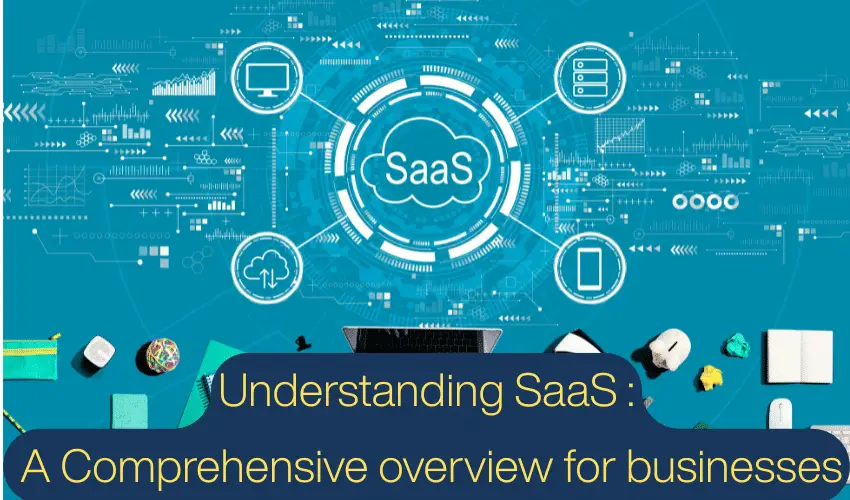SaaS, Software as a Service represents a revolutionary approach to software delivery that has transformed how businesses access and utilize technology resources. This overview explores the fundamental aspects of SaaS models and their significance in today's business landscape.
The foundations of SaaS models
SaaS delivers applications over the internet, eliminating traditional installation requirements while offering flexible subscription-based pricing. This cloud computing category stands alongside Infrastructure as a Service (IaaS) and Platform as a Service (PaaS), forming the backbone of modern digital business infrastructure.
Also Read: HomePage
Key components that define SaaS platforms
The distinctive architecture of saas platforms centers around multi-tenant structures where a single application instance serves multiple customers simultaneously. Web-based accessibility ensures users can connect from any device with internet connectivity, while automatic updates remove maintenance burdens from businesses. The subscription model transforms capital expenditures into operational costs, creating predictable recurring revenue streams for providers while offering customers scalability without significant upfront investment.
Evolution from traditional software to cloud-based solutions
The transition from on-premises software to cloud solutions marks a fundamental shift in how businesses consume technology. Before cloud computing emerged, companies purchased expensive licenses and maintained dedicated infrastructure. Modern SaaS solutions have eliminated these barriers, democratizing access to sophisticated applications previously available only to enterprises with substantial IT resources. This evolution has accelerated digital transformation across industries, enabling businesses of all sizes to leverage enterprise-grade software through web browsers rather than complex local installations.
SaaS benefits for modern business operations
Software as a Service (SaaS) has revolutionized how businesses access and utilize software applications. This cloud-based model delivers applications via the internet, eliminating the need for physical installation and maintenance while offering subscription-based pricing models. The global SaaS market, valued at $251.17 billion last year, is projected to reach $883.34 billion by 2029, demonstrating its growing importance in the business technology landscape.
SaaS represents one of the three main categories of cloud computing alongside Infrastructure as a Service (IaaS) and Platform as a Service (PaaS). Unlike traditional software, SaaS applications are hosted and maintained by vendors, allowing businesses to focus on using the software rather than managing it. Most SaaS solutions employ a multi-tenant architecture where a single software instance serves multiple customers, maximizing efficiency and reducing costs.
Cost efficiency and scalability advantages
SaaS offers significant financial benefits through its flexible payment structure and scalable usage model. By eliminating upfront costs for licenses and installation, businesses can convert capital expenditures into operational expenses. The subscription-based pricing provides predictable budgeting while allowing companies to scale services up or down based on current needs without proportional increases in costs.
The scalability advantage extends beyond financial considerations. SaaS enables businesses to rapidly deploy new capabilities and adjust resources on-demand. This flexibility is particularly valuable for growing companies that need to quickly adapt to market changes or seasonal demands. The reduced IT workload is another cost-saving aspect, as SaaS vendors handle maintenance, updates, and security patches automatically. This arrangement frees internal IT teams to focus on strategic initiatives rather than routine maintenance tasks.
Accessibility and collaboration features
Web-based accessibility represents one of SaaS's most powerful benefits. Users can access applications from any device with an internet connection, enabling true mobility and remote work capabilities. This universal access eliminates geographical barriers and supports distributed teams across different locations and time zones.
SaaS platforms excel at enabling collaboration through shared workspaces, real-time document editing, and integrated communication tools. Multiple team members can work simultaneously on projects regardless of physical location, streamlining workflows and improving productivity. Most SaaS applications also collect real-time data and analytics, providing businesses with valuable insights into operations and user behavior that can drive informed decision-making.
Security features in SaaS have evolved substantially, with vendors implementing multi-layered protection strategies including data encryption, strict access controls, and regular security audits. Many SaaS providers promise 99% to 99.9% uptime, ensuring business continuity through robust disaster recovery capabilities. Integration capabilities through APIs allow SaaS applications to connect with other platforms, creating comprehensive ecosystems that enhance overall business operations.
We are giving you exclusive deals to try Linux Servers for free with 100$ credit, check these links to claim your 100$,
DigitalOcean - 100$ free credit & Linode - 100$ free credit
Check some Exclusive Deals, HERE.
Also, check out DevOps Book You should read section.
